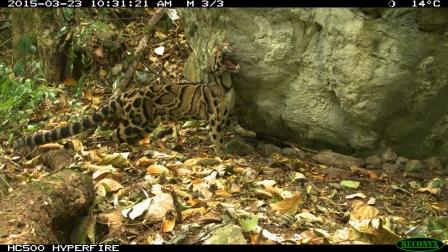News
Toolkit for supporting conservation decision makers in Myanmar
Optimizing the trade-off between development goals and conservation is essential to minimize the effects of rapid land use change on biodiversity. In our third short video in a series from WildCRU’s Clouded Leopard Programme, we present an analysis of the impact of major international development on clouded leopard population connectivity, landscape dynamics and genetic diversity in Myanmar, recently published in Landscape Ecology.
After decades of political and economic isolation, Myanmar is now the focus of large international investments, particularly from China, which raises questions of how to balance national development with safeguarding the Indo-Burma biodiversity hotspot. This work evaluates the impact of five major developments in Myanmar (Pipeline railroad, Silk Road, Indian Highway, Dams and Emerging economic zones) on forest ecosystems, using clouded leopard as a focal and umbrella species for wider biodiversity conservation. Based on an empirical habitat relationships model, built from WildCRU’s extensive camera trap survey, we identified core areas and corridors for clouded leopard in Myanmar, and compared them across the development scenarios. We simulated population dynamics and genetic diversity in each scenario using an individual-based, spatially explicit cost-distance population genetics model. Each development was predicted to have a negative effect, to find out more watch the video above.
Read more about our Clouded Leopard Programme.
Kaszta, Ż., Cushman, S. A., Htun, S., Naing, H., Burnham, D., & Macdonald, D. W. Simulating the impact of Belt and Road initiative and other major developments in Myanmar on an ambassador felid, the clouded leopard, Neofelis nebulosa. Landscape Ecology, 1-20.









